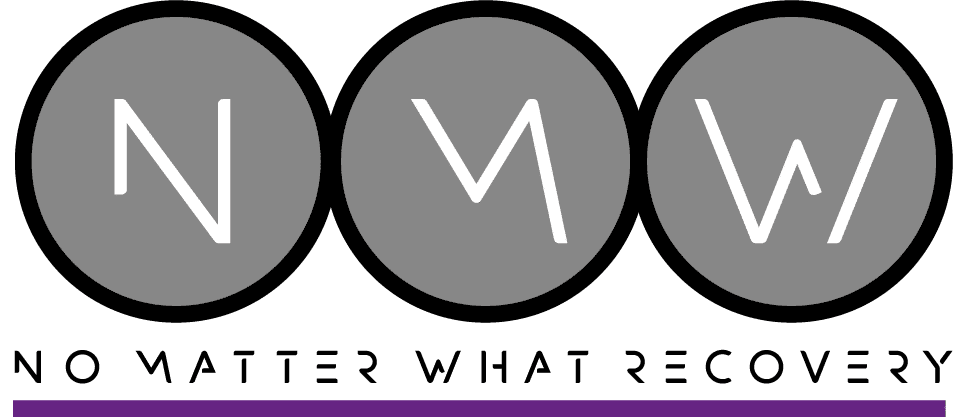The chemical composition of crystal meth has undergone dramatic changes in recent years, transforming this already dangerous drug into an even more lethal substance. Today’s methamphetamine is vastly different from what was available just two decades ago, with higher purity levels, more toxic manufacturing processes, and deadly adulterants that have created a public health crisis of unprecedented proportions.
What Is the Basic Chemical Composition of Crystal Meth?
Methamphetamine (contracted from N-methylamphetamine) is a potent central nervous system (CNS) stimulant with the molecular formula C₁₀H₁₅N. The hydrochloride salt, commonly called crystal meth, is widely used and appears as white crystals or a white crystalline powder with a melting point between 170 and 175 °C (338 and 347 °F), according to PubChem’s chemical database. As a Schedule II controlled substance, methamphetamine has some medical utility but also significant potential for misuse.
The chemical composition of crystal meth includes two mirror-image forms called enantiomers: levomethamphetamine (l-methamphetamine) and dextromethamphetamine (d-methamphetamine). Pure crystalline methamphetamine was first made in 1919 and its cousin, amphetamine, in 1887, making it a synthetic drug rather than a plant-derived substance. Understanding the dangers of different drug types is crucial for public health awareness.
Understanding the chemical composition of crystal meth is crucial because amphetamine and methamphetamine have a slightly different structure to the naturally occurring phenylethylamine (PEA), so they resist the liver enzyme that decomposes amines, which explains why methamphetamine has such powerful and long-lasting effects on the human body. The drug primarily affects catecholamine systems in the brain, including the dopamine transporter and serotonin transporter, leading to intense euphoric effects. The dangers of methamphetamine use are particularly pronounced in the LGBTQ+ community, where usage rates have historically been higher.
How Has the Manufacturing Process Changed the Chemical Composition of Crystal Meth?
The chemical composition of crystal meth has been dramatically altered by changes in methamphetamine production methods over the past two decades. Traditionally, illicit meth was produced using ephedrine or pseudoephedrine found in over-the-counter cold medications through various lab processes. However, when U.S. drug legislation pushed ephedrine and pseudoephedrine behind pharmacy counters in 2006, meth labs completely reinvented their processes. This shift has made meth rehab in Los Angeles and other areas increasingly complex due to the changing composition of the drug.
The Shift to P2P Production
Super meth (P2P meth) is a variant of standard methamphetamine that uses a different precursor for production. Instead of ephedrine or pseudoephedrine, super meth is manufactured with phenyl-2-propanone (phenylacetone). This fundamental change in the chemical composition of crystal meth has had catastrophic consequences..
By 2012, that number had shot up to 96% of all domestic meth samples being produced using the P2P method, according to DEA data. Super meth now represents 96% of seized meth nationwide, with deadly purity levels of 93%.
Toxic Chemical Ingredients
The modern chemical composition of crystal meth now includes extremely hazardous meth ingredients. P2P meth replaces the active ingredient in over-the-counter decongestants with more toxic chemicals like cyanide, chloroacetone (tear gas), lye, and benzene. Manufacturing now involves dangerous solvents and strong acids:
- Sulfuric acid
- Hydrochloric acid
- Racing fuel
- Kerosene
- Acetone
- Ethanol
- Methanol
- Isopropanol
- Ether
- Gasoline
- Ammonia
- Lithium aluminum hydride
- Sodium compounds
- Potassium compounds
- Magnesium
- Aluminum
- Iodine
- Methylamine
Some manufacturers also use the dangerous “shake and bake” method, where ingredients are combined in containers that can easily lead to explosion and severe injury.
Why Is Today’s Crystal Meth More Dangerous Than Before?
Unprecedented Purity Levels
The chemical composition of crystal meth today features alarming purity levels. The average purity of methamphetamine today is over 90 percent, compared to much lower purities in previous decades. P2P meth is more potent (90% pure as opposed to 80% pure for crystal meth), and much less expensive to produce than pre-2006 crystal meth.
Different Isomer Ratios
A critical aspect of the chemical composition of crystal meth involves the ratio of dextromethamphetamine to levomethamphetamine. In recent drug seizures, l-methamphetamine is almost completely absent in P2P meth, whereas in traditional meth d-methamphetamine concentration is anywhere from 20% to 50% or more. This change significantly impacts the drug’s effects on users and affects the neurochemical balance in the brain.
Longer-Lasting and More Severe Effects
The altered chemical composition of crystal meth has changed user experiences dramatically. Pre-2006 meth caused euphoric and energizing highs lasting around 12 hours, but super meth causes a stupefying and incapacitating high for 24 hours or more. P2P seems to drive users toward isolation and neurological descent. These effects can be particularly concerning when combined with other substances, as seen in cases of meth psychosis.
What Deadly Adulterants Are Found in Modern Crystal Meth?
Fentanyl Contamination
One of the most alarming changes to the chemical composition of crystal meth is fentanyl contamination. The adjusted prevalence of fentanyl was 12.5% (95% CI: 2.2%, 22.9%) in powder methamphetamine, according to recent drug checking services data. This contamination creates a dangerous drug situation where users face unexpected overdose risks.
There is a significant risk that illegal drugs have been intentionally contaminated with fentanyl. Because of its potency and low cost, drug dealers have been mixing fentanyl with other drugs, including heroin, methamphetamine, and cocaine. This contamination has contributed to nearly 70% of stimulant involved overdose deaths in 2023 also involved IMF (illicitly manufactured fentanyl). The presence of fentanyl in methamphetamine makes understanding what to expect from a drug detox even more critical for those seeking recovery.
Other Dangerous Cutting Agents
The chemical composition of crystal meth now frequently includes numerous harmful cutting agents that can be identified through gas chromatography-mass spectrometry analysis:
- Methylsulfonylmethane (MSM) — a powder that is sold for use in reducing joint pain
- Red dye that remains when tablets are not properly processed
- Phosphorus — an extremely toxic chemical that can give meth a purplish appearance
- Metals like palladium, nickel, and lithium that end up in the finished product
- Chloride compounds used in processing
- Hydroxide bases used in manufacturing
- Various corrosives that remain as impurities
- Dust and other contaminants from unsanitary production environments
These dangerous additives create visible physical effects, including meth sores that appear on users’ skin due to the toxic nature of these substances.
How Has Overdose Data Changed Due to Chemical Composition Changes?
Dramatic Increase in Methamphetamine Deaths
The changes in the chemical composition of crystal meth have coincided with alarming increases in overdose deaths. From 2015 to 2019, the number of overdose deaths involving psychostimulant drugs other than cocaine (largely methamphetamine) rose from 5,526 to 15,489, a 180% increase.
However, the number of people who reported using methamphetamine only increased by 43% over the same period, indicating that the increased lethality is directly related to changes in the drug’s composition rather than simply increased usage.
Production and Market Data
The scale of production has also dramatically increased. According to the U.S. Forest Service, 1 pound of meth produces up to 6 pounds of toxic waste, highlighting the environmental dangers of the manufacturing process. Law enforcement uses the Marquis field test and GC-EI-MS analysis to identify methamphetamine in seized samples.
From 2007 to 2010, the price of meth plummeted by 61% and purity increased by 114%, demonstrating how changes in the chemical composition of crystal meth have made the drug more accessible while simultaneously making it more dangerous.
What Are the Health Risks from Chemical Exposure in Meth Labs?
Immediate Health Effects from Chemical Exposure
Meth labs pose severe health risks through multiple routes of exposure. People can experience chemical exposure through inhalation, direct contact, and skin exposure to the toxic chemicals used in methamphetamine production. Common symptoms of intoxication from lab exposure include:
- Shortness of breath and respiratory problems
- Chest pain and difficulty breathing
- Cough and throat irritation
- Nausea and vomiting
- Dizziness and lack of coordination
- Skin burns from contact with corrosives
- Eye irritation and damage to the eyes
- Nose and throat burning
Air Quality and Environmental Concerns
The physical properties of methamphetamine manufacturing create dangerous air concentrations of toxic gasses that can contaminate building structures. Exposure to these chemicals requires extensive decontamination efforts and can affect entire neighborhoods through air contamination. Understanding the risks is crucial, as many people wonder about the dangers of quitting drugs cold turkey without medical supervision, especially given the toxic nature of modern methamphetamine.
What Are the Long-Term Health Consequences of Modern Crystal Meth?
The altered chemical composition of crystal meth has intensified health consequences. The drug affects VMAT2 and TAAR1 receptors in the brain, leading to long-term neurochemical changes.
Problems with skin abscesses, “meth mouth” (rotting and deteriorating teeth), weight loss, and internal organ damage affect the lungs, cardiovascular system, and other vital organs. These effects can persist throughout a user’s lifetime, even after cessation of use. For those struggling with methamphetamine addiction, dual diagnosis treatment is often necessary to address both the addiction and co-occurring mental health issues.
How Can Communities Respond to the Changing Chemical Composition of Crystal Meth?
Harm Reduction and Testing
Recommended interventions include expanding community-based drug checking, naloxone and fentanyl test strip distribution for people who use stimulants, and supervised drug consumption sites. Scientific evidence supports these approaches to reduce harm from contaminated substances.
Law Enforcement and Laboratory Analysis
In 2024, DEA seized more than 60 million fentanyl-laced fake pills and nearly 8,000 pounds of fentanyl powder, demonstrating ongoing efforts to combat the distribution of contaminated substances. Labs use advanced gas chromatography–mass spectrometry techniques to analyze the quantity and composition of seized drugs. The mass spectrum analysis helps identify specific adulterants and cutting agents in samples. Treatment facilities increasingly rely on holistic therapy approaches to address the complex physical and psychological effects of contaminated methamphetamine.
Conclusion: The Evolving Danger of Crystal Meth’s Chemical Composition
The chemical composition of crystal meth has undergone profound changes that have made this dangerous drug exponentially more lethal. From the shift to P2P production methods using highly toxic chemicals to widespread fentanyl contamination, today’s methamphetamine represents a public health crisis that requires immediate attention.
From 2015 to 2019, methamphetamine-involved overdose rates nearly tripled, directly correlating with these changes in chemical composition. Understanding these changes is crucial for healthcare providers, law enforcement, policymakers, and communities working to address this growing crisis.
If you or someone you know is struggling with methamphetamine addiction, professional help is available. The complexity of modern meth’s chemical composition requires specialized medical detoxification and comprehensive treatment approaches to achieve lasting recovery. For those considering different levels of care, intensive outpatient programs (IOP) can provide structured support while allowing individuals to maintain their daily responsibilities.
Get Help for Methamphetamine Addiction Today
The evolution of methamphetamine’s chemical composition has made this drug more dangerous than ever before. If you or a loved one is struggling with meth addiction, don’t wait—seek professional help immediately.
No Matter What Recovery offers comprehensive methamphetamine addiction treatment in Los Angeles, including:
- Medical detoxification to safely manage withdrawal from contaminated substances
- Intensive Outpatient Programs (IOP) for flexible, comprehensive care
- Dual diagnosis treatment for co-occurring mental health conditions
- Holistic therapy approaches to heal mind, body, and spirit
- Specialized care for LGBTQ+ individuals in a safe, affirming environment
The toxic nature of today’s methamphetamine requires expert medical supervision during detox and recovery. Our experienced team understands the unique challenges posed by modern meth’s chemical composition and provides personalized treatment plans to ensure your safety and success.
Recovery is possible, no matter what. Let us help you or your loved one break free from methamphetamine addiction and build a healthier, drug-free future. Contact us today.

Dr. Eric Chaghouri is our Medical Director at No Matter What Recovery. Since completing his forensic psychiatry fellowship, he has established a successful and thriving practice in Southern California, focusing on treatment of co-occurring psychiatric and addictive disorders.

Dr. Eric Chaghouri is our Medical Director at No Matter What Recovery. Since completing his forensic psychiatry fellowship, he has established a successful and thriving practice in Southern California, focusing on treatment of co-occurring psychiatric and addictive disorders.







